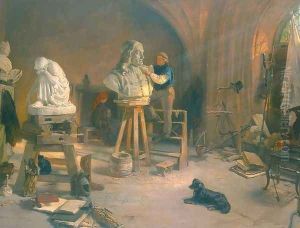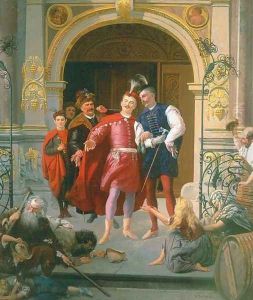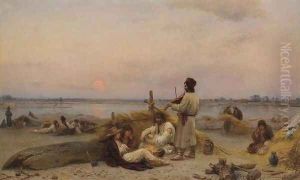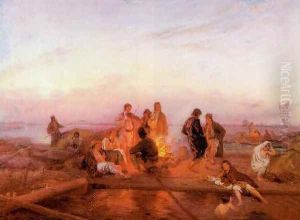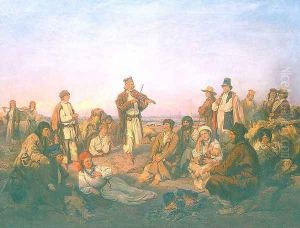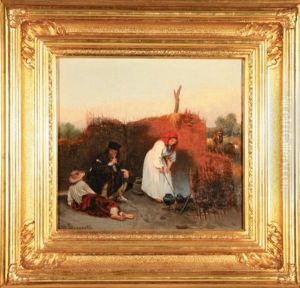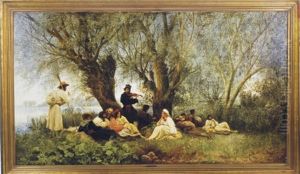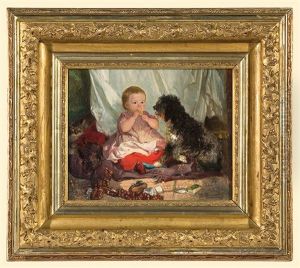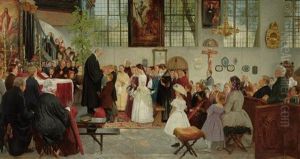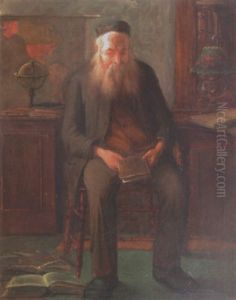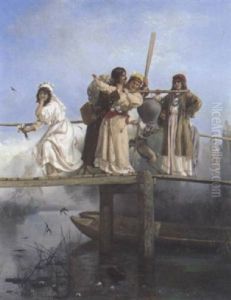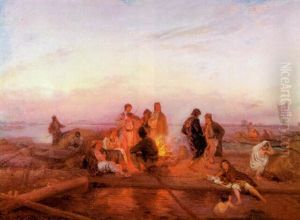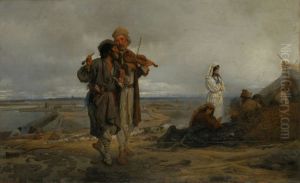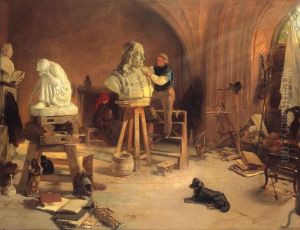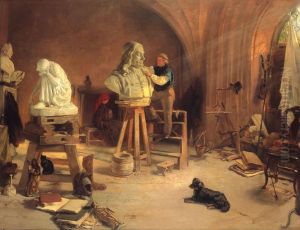Wilhelm August Stryowski (Stryjowski) Paintings
Wilhelm August Stryowski, also known as Wilhelm August Stryjowski, was a Polish painter born on September 18, 1834, in Gdańsk, which at the time was part of the Kingdom of Prussia. He is best known for his genre scenes, portraits, and historical paintings. Stryowski's artistic journey began in his hometown, but his talent and ambition led him to pursue further art education.
After initial studies in Gdańsk, Stryowski moved to Düsseldorf in 1852, which was then a renowned center for art and painting. The Düsseldorf Academy of Arts, where he studied, was famous for its teaching methods and attracted students from various parts of Europe. It was here that Stryowski honed his skills and was particularly influenced by the Düsseldorf school of painting, known for its detailed and meticulous style, as well as an emphasis on historical and genre subjects.
Throughout his career, Stryowski received accolades for his work. He became a respected and well-known figure in the art communities of Poland and Germany. After his studies, he returned to Gdańsk and became a significant member of the city's cultural life. He took part in numerous exhibitions and gained a reputation for his portraits, which were highly regarded for their realistic representation and psychological depth.
Stryowski's historical paintings often reflected the rich past of his native Poland, capturing significant moments and figures in Polish history. His genre scenes, on the other hand, depicted everyday life with a keen eye for detail and a compassionate portrayal of his subjects.
Wilhelm August Stryowski remained active in the art world throughout his life. He played a crucial role in the cultural scene of Gdańsk and was involved in the establishment of art societies and the promotion of young artists. Stryowski continued to create art that resonated with the public and his peers until his death on January 1, 1917, in Gdańsk. His legacy is preserved in the collections of various museums and galleries in Poland and abroad, where his works continue to be appreciated by art enthusiasts and historians.
